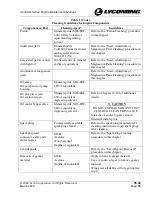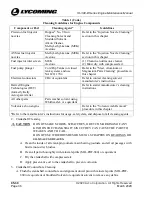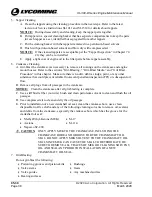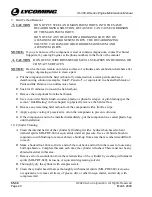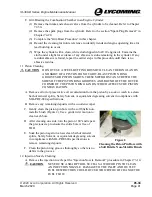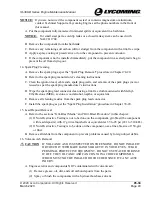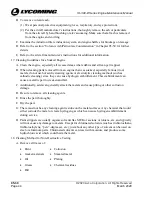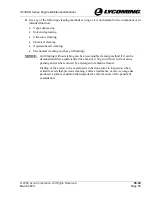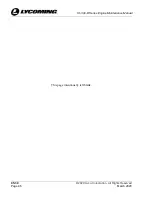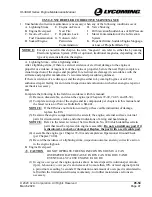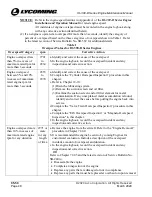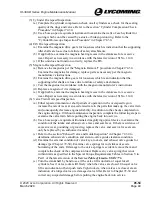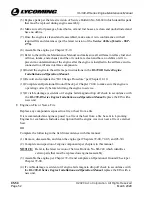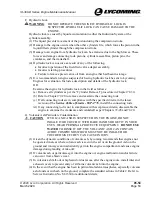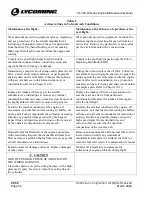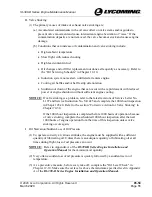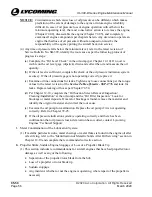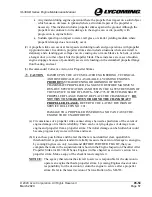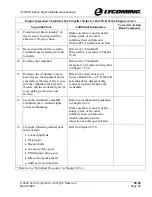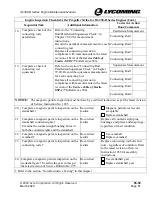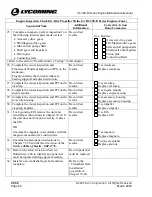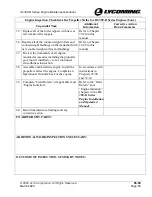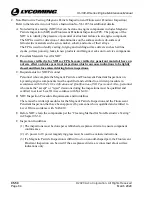
IO-390-D Series Engine Maintenance Manual
© 2020 Avco Corporation. All Rights Reserved
05-50
March 2020
Page 49
IO-390-D Series Engine Maintenance Manual
(3)
Cylinder Overspeed Inspection
(a)
Complete the cylinder compression check on all cylinders as a check for the sealing
quality of the rings and valves. Refer to the section “Cylinder Compression Check
Procedure” in Chapter 72-30.
(b)
Use a borescope or equivalent instrument to examine the walls of each cylinder for
scoring which could be caused by a stuck or broken piston ring. Refer to the
“Cylinder Borescope Inspection Procedure” in Chapter 72-30.
(4)
EIS Overspeed Inspection
(a)
Examine the magneto drive gears for looseness which is indication that the supporting
idler shafts are loose due to failure of safety attachments.
(b)
If applicable, examine the magneto bearing recess in the crankcase for excessive
wear. Repair as necessary in accordance with the latest revision of SI No. 1140.
(c)
If the unit does not function correctly, replace the EIS.
(5)
Magneto Overspeed Inspection
(a)
Remove the magnetos per the “Magneto Removal” procedure in Chapter 74-30.
Examine the magnetos for damage; replace parts as necessary per the magneto
manufacturer’s instructions.
(b)
Examine the magneto drive gears for looseness which is an indication that the
supporting idler shafts are loose due to failure of safety attachments.
(c)
Test the magnetos in accordance with the magneto manufacturer’s instructions.
(d)
Replace a magneto if it is damaged.
(e)
If applicable, examine the magneto bearing recess in the crankcase for excessive
wear. Repair as necessary in accordance with the latest revision of SI No. 1140.
(6)
Valve Train Overspeed Inspection
(a)
Either repeated moments or short periods of operation in the overspeed region
increase the rate of wear at an accelerated rate in the parts that make up the valve train
and consequently decrease engine reliability. In addition to the checks completed on
the engine during a 100-hour maintenance inspection, complete the following steps to
examine the valve train before putting the engine back into service.
(b)
Use a borescope or equivalent illuminated magnifying optical device to examine the
condition of the intake and exhaust valve faces and seat faces. If there is evidence of
excessive wear, pounding, or grooving, replace the valve and seat (valve seats can
only be replaced by an authorized vendor.)
(c)
Refer to the section "Exhaust Valve and Guide Inspection" in Chapter 72-30 to
determine exhaust valve condition and stem-to-valve guide clearance condition.
(d)
Examine the external condition of valve keys, rockers, and exhaust valve guides for
damage (per Chapter 72-30). Examine valve springs for coil strikes or severe
bottoming of the coils. If damage to the valve springs is evident, remove them and
complete the check of the compression load. Replace any valve spring that is not
within limits as specified in the Special Torque Requirements Tables in Section V in
Part 1 of the latest revision of the
Service Table of Limits - SSP-1776
.
(e)
Turn the crankshaft by hand to see if the valve lift is uniform or equal for all
cylinders. See if valve rockers lift freely when the valves are closed. Unequal valve
lift is an indication of bent push rods. Tight rockers, when valves are closed, are an
indication of a tuliped valve or a damaged valve lifter. Refer to Chapter 72-30 and
correct any suspected damage before putting the engine back into service.

